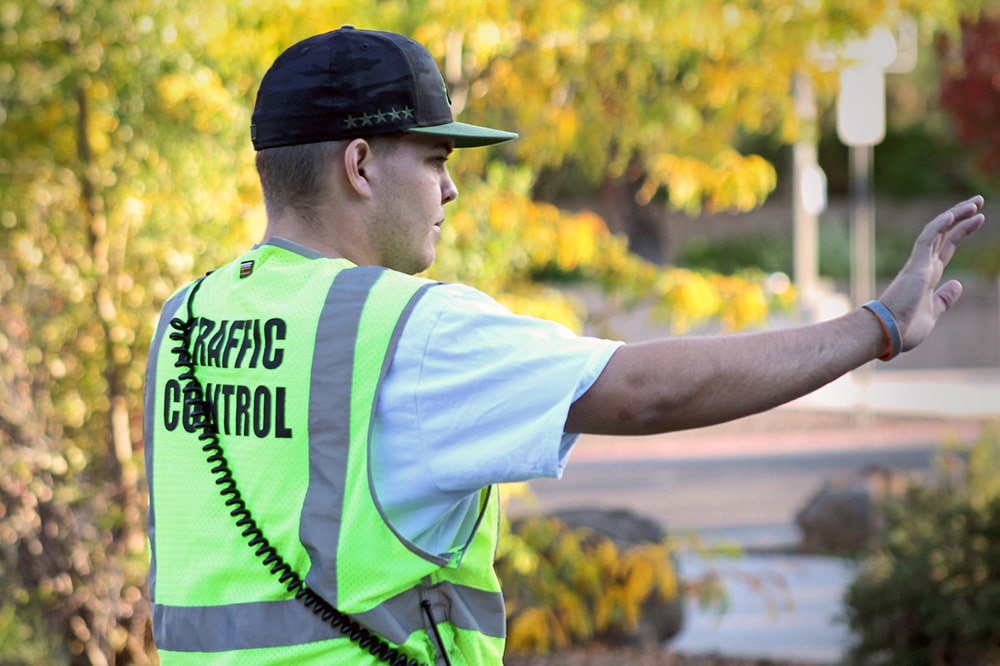There is little that compares to the frustration created from getting around a busy campus.
“There have been times that I leave my office around 5 p.m. and don’t get off campus for 20 more minutes,” said Northern Arizona University Police Sgt. Joe Tritschler.
With the increase in population on NAU’s campus, congestion on the streets has only seemed to become more prominent. The heavy vehicle traffic combined with the heavy foot traffic raises concerns not only about getting students, faculty, staff and visitors where they need to be, but doing so safely.
Beginning in 2008, NAUPD introduced a program to better aid in transportation throughout campus. Unique to NAU, the Student Traffic Controllers (STC) program gives students hands-on experience working for the police department, while providing a service to all that helps vehicle and pedestrian traffic move through campus more smoothly. Priding themselves on their three core values—safety, efficiency and politeness—the program has seen praise across all boards.
Students hired into the program must first go through a background check. Upon completion, they undergo a training program that is essentially modified lesson plans from the Phoenix Police Department. Here, they are provided with two hours of classroom training, then move on to practical training with an officer before they may work solo. All students who work on the roadways are equipped with a police radio and safety vest, as well as any other necessary equipment.
Student traffic controllers are primarily located in the busier intersections on campus, including Pine Knoll and McConnell, Knoles and McConnell, and the exit of Lot 62 located on south campus. During peak hours, workers also may move over to the intersection in front of Cline Library and McCreary.

“The program is an enormous help to everyone on campus, both vehicles and pedestrians,” Campbell said. “Without the aid of student traffic controllers on campus at busy times, roads on campus would essentially become a complete gridlock. Through facilitating traffic, we allow pedestrians to cross safely and allow vehicles to get around and off campus quickly while allowing the shuttles priority.”
Though she knows people still get frustrated by having to wait as others go, the mechanism behind who goes when is in favor of the majority.
“It’s not that we ignore cars and trucks; rather, we factor in numbers to get the majority where they need to be,” Tritschler said. “There could be 10 cars waiting, but only be carrying two people each, whereas we have a bus full of 40, 50, 60 people—that’s going to make the difference when directing stops.”
While putting people in the roadway is not a long-term solution, until other resources come along, the students are willing and want to continue their duties.
“Overall, we want to help everyone get to where they are going quickly and safely,” concludes Campbell. “Traffic is very heavy on campus so make sure you are paying attention to your surroundings whether you are in a car or a pedestrian, and make sure to have patience during busy times.”
In the 10 years since the program has been around, it has gained recognition, proven to benefit the campus community and increased in popularity among students.
“For what we have, we are doing good,” said Tritschler, who now is head of the STC program. “We want to make sure that for our students, their financial needs are met and their hours align with what they need.”
Maya Hall | NAU Communications
(928) 523-2282




